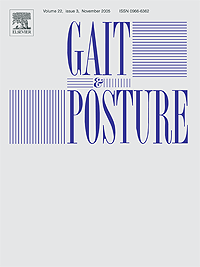AMTI Research Archive
AMTI’s instrumented equipment has been trusted by researchers worldwide for over 45 years to provide accurate and reliable data in support of their scientific achievements.

Kinematics of the side split-belt versus single-belt treadmill
Instrumented treadmills have been widely used in the last decade
It allows to collect sequential kinetic data of gait cycles instead of the standard one or two cycles on fixed force platforms setups.
Those devices have, of course, also their pitfalls depending on their configuration. An instrumented treadmill needs two belts to allow side by side differentiation during the gait cycle. To do so, one way is to have one belt in front of the other with a small horizontal gap or the other way is to have one belt on each side with a gap varying from 4mm to multiple centimeters. This particular configuration called “side by side split belt” and its related gap may have consequences in people’s gait pattern and biomechanics that remained to be determined.
A recent study from Altman et al. (Gait and Posture, In press, 2011, https://www.gaitposture.com/article/S0966-6362(11)00398-5/abstract) focused on the effect of such treadmill version on the lower body kinematics. They hypothesized the impact that an increased in the stance width could have in t he foot pronation, knee valgus or hip adduction.
In the study, they focused on the base of gait, or stance width, and the lower body kinematics between walking on a single belt treadmill and a side by side treadmill. Their results showed a widened base of gait in the side by side treadmill by an average of 3.7cm. No statistically differences were seen on the knee and hip adduction mean angles between the two treadmills. However, the authors underlined a linear relationship between the change in the base of gait and the amount of reduction in the knee and hip peak angles.
In the conclusion, the authors remind the reader that these data is based on a small 4mm gap side by side treadmill. This means that higher gaps may have stronger impact in the lower body kinematics but further studies are needed to emphasize that. It will also be interesting to number the gait cycles that have to be deleted from such study due to “un-lateralized” foot strikes.
Biomechanically yours.
